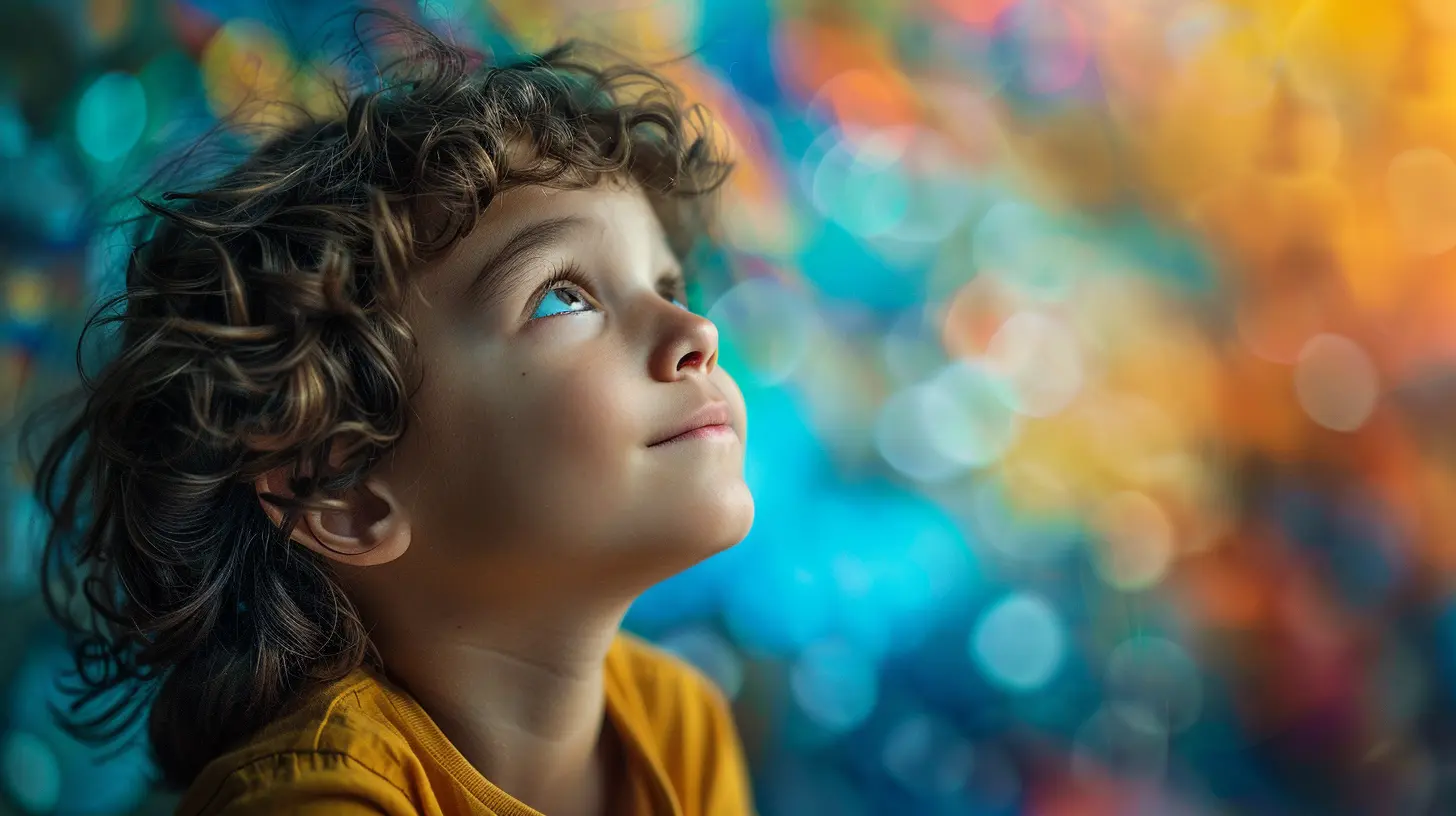How Sensory Experiences Shape Brain Development
27 June 2025
Have you ever noticed how a baby reacts to different textures, sights, and sounds? From the softness of their favorite blanket to the soothing rhythm of a lullaby, every experience plays a crucial role in shaping their brain. Sensory experiences are not just about feeling things—they are the building blocks of cognitive growth, emotional regulation, and even social skills.
But how exactly does this happen? And why is it so important for parents to understand the role of sensory input in their child’s development? Let’s dive deep into the fascinating world of sensory experiences and how they shape brain development. 
The Science Behind Sensory Experiences and Brain Growth
From the moment a baby is born (and even before that), their brain is a sponge, soaking up every sensation. Sensory experiences—what they see, hear, touch, taste, and smell—send signals to the brain, helping to forge neural connections.Think of the brain as a vast network of roads. Every new sensory experience lays down fresh pathways, and the more frequently a road is used, the stronger and faster it becomes. These pathways form the foundation for learning, memory, language, and even emotional intelligence.
The Role of Neuroplasticity
Neuroplasticity is the brain's ability to change and adapt based on experiences. In early childhood, the brain is incredibly flexible, meaning that positive sensory input can lead to stronger connections.For instance, when a baby repeatedly hears their parent’s voice, neurons associated with language and auditory processing strengthen. Similarly, when they grasp different textured toys, their brain refines motor skills and tactile awareness. 
The Five Senses and Their Impact on Development
Each of the five senses plays a unique role in shaping a child’s brain development. Let’s break it down:1. Touch: The Foundation of Emotional Security
Touch is often one of the first ways a baby experiences the world. Skin-to-skin contact, cuddles, and gentle strokes release oxytocin (the "love hormone"), fostering a deep sense of security and attachment.Babies who receive regular physical touch tend to be calmer, cry less, and form healthier emotional bonds. This tactile interaction also strengthens their ability to regulate stress, which has long-term benefits for emotional well-being.
2. Sight: Building Visual Recognition and Focus
Newborns have blurry vision at first, but as they experience different patterns, colors, and shapes, their brain develops visual pathways. High-contrast images (like black and white patterns) are particularly engaging for young infants and help strengthen their visual processing skills.As babies grow, looking at faces, tracking moving objects, and eventually recognizing familiar people all contribute to their brain’s ability to process and interpret the visual world.
3. Hearing: The Gateway to Language Development
A baby starts hearing sounds in the womb, but after birth, auditory experiences become even more crucial. The cooing of parents, the rhythm of nursery rhymes, and even background noises help develop a child's auditory processing skills.Children who are exposed to rich language environments learn to distinguish sounds faster, leading to stronger language skills later in life. This is why talking, singing, and reading aloud to babies is so essential.
4. Taste and Smell: Enhancing Memory and Emotional Connections
Have you ever smelled something and been instantly reminded of a childhood memory? Taste and smell are closely connected and strongly linked to emotions and recollection.Breastfed babies, for example, recognize the unique scent of their mother, which creates a comforting sense of familiarity. As they grow, introducing a variety of flavors helps develop their taste preferences and encourages healthy eating habits.
5. Movement and Proprioception: Strengthening Coordination
Beyond the traditional five senses, proprioception (the sense of body awareness) and vestibular input (movement and balance) are critical to physical development. Crawling, climbing, and even spinning in circles help the brain integrate sensory information to develop coordination and spatial awareness.Children who engage in plenty of movement-based activities often improve in areas like balance, hand-eye coordination, and even concentration. 
How Sensory Play Boosts Brain Development
Sensory play is one of the most effective ways to encourage healthy brain development in children. It engages multiple senses at once, reinforcing neural pathways and enhancing cognitive skills.Simple Sensory Activities for Babies and Toddlers
- Tummy time with textured mats – Helps with motor development while providing varied tactile input.- Water play – Pouring, splashing, and feeling water enhances sensory exploration.
- Playing with different fabrics – Silk, wool, and cotton stimulate touch perception.
- Listening to soft music or nature sounds – Encourages auditory processing and emotional calmness.
- Sensory bins – Filling a container with rice, beans, or sand allows children to explore textures in a fun, engaging way.
These activities may seem simple, but they lay the groundwork for problem-solving skills, creativity, and emotional resilience. 
The Link Between Sensory Processing and Emotional Regulation
Ever wonder why some kids love loud noises while others cover their ears? Or why certain children need to touch everything while others avoid textures? These differences come down to sensory processing.Sensory Processing Sensitivities
Children experience sensory input in unique ways. Some are sensory seekers, craving constant movement and touch, while others are sensory avoiders, easily overwhelmed by textures, sounds, or bright lights.Understanding your child’s sensory preferences can help you create an environment that supports their needs. For example:
- If a child is overwhelmed by noise, providing quiet spaces helps them feel secure.
- If a sensory seeker fidgets constantly, offering textured toys or movement breaks can improve focus.
Helping children process sensory input effectively contributes to better emotional regulation, reducing tantrums, anxiety, and frustration.
The Critical Window for Sensory Development
Did you know there’s a prime time for sensory development? The early years (0-5) are when the brain is the most adaptable to new experiences. Missing out on rich sensory input during this window can lead to challenges in processing information later in life.What Happens When Sensory Input Is Limited?
Children raised in environments with minimal sensory stimulation—such as extreme neglect—often show delays in motor skills, language, and emotional control. This is because their brains lack the necessary experiences to build strong neural connections.That’s why it's important to expose children to a variety of sensory experiences in a safe and supportive manner, giving their brains the tools they need for lifelong learning and development.
Supporting Healthy Sensory Development at Home
So, what can parents do to ensure a child gets the right sensory input? Here are a few simple strategies:1. Encourage outdoor play – Nature provides a rich sensory environment, from the feel of grass underfoot to the sound of birds chirping.
2. Limit excessive screen time – Digital devices offer limited real-world sensory experiences, which can impact attention and focus.
3. Create a sensory-friendly space – A cozy reading nook, calm lighting, and soft textures can make a big difference.
4. Engage in messy play – Finger painting, playdough, and sand play encourage tactile exploration and creativity.
5. Prioritize connection through touch – Snuggles, high-fives, and gentle massages strengthen emotional bonds and security.
Final Thoughts
The way children experience the world through their senses directly impacts how their brains develop. Every cuddle, every song, every messy play session builds strong neural connections that shape their learning, emotions, and social skills.As parents, understanding the power of sensory experiences allows us to create meaningful moments that foster growth. So, the next time your child is splashing in a puddle or running their fingers through a pile of leaves, remember—they’re not just playing. They’re building their brain, one sensation at a time.
all images in this post were generated using AI tools
Category:
Child DevelopmentAuthor:

Maya Underwood
Discussion
rate this article
1 comments
Rune McGowan
Thank you for sharing these insights! It’s so enlightening to understand how sensory experiences influence brain growth. I appreciate the practical tips for incorporating sensory play into daily routines—it truly makes a difference for our little ones!
July 4, 2025 at 3:01 AM

Maya Underwood
Thank you for your kind words! I'm glad you found the insights and tips helpful for supporting children's brain development through sensory play.


